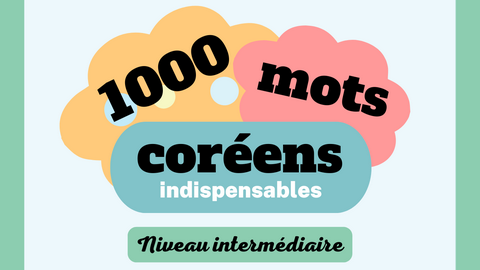Cours de coréen ᚛ Level 1 - My First Steps in Korean (Lessons 1 to 30) ᚛ Leçon 23 - Possession in Korean [의]
Possession in Korean [의]
We continue our journey in the world of particles with the particle that allows us to indicate the belonging of something, it is 의.
Be careful, when it comes to the possessive particle 의, it is usually pronounced 에.
Express possession
In Korean, to indicate the belonging of something to someone, the following form is used:
[possessor]의 [possessed]
You can notice that the possessor is indicated before the possessed object, as in English.
지유의 핸드폰
→ Jiyu's phone
On either side of the particle 의 we have:
- the possessor: 지유 (= Jiyu (Korean name))
- the possessed: 핸드폰 (= a cell phone)
선생님의 차
→ the teacher's car
On either side of the particle 의 we have:
- the possessor: 선생님 (= a teacher)
- the possessed: 차 (= a car)
오빠의 펜
→ my big brother's pen
On either side of the particle 의 we have:
- the possessor: 오빠 (= a big brother)
- the possessed: 펜 (= a pen)
저의 가방이에요.
→ It is my bag.
곰의 발은 커.
→ The bear's feet are big.
Note: after someone's name that ends in a consonant, we do not add 의 but 이의.
- 지민 → 지민이의
- 정국 → 정국이의
Omission of the particle
In practice, this particle is very often omitted in order to simplify sentences.
The expressions of the previous section can therefore be repeated by omitting the particle 의, as follows:
지유 핸드폰
→ Jiyu's phone
선생님 차
→ the teacher's car
오빠 펜
→ Oppa's pen
의 with personal pronouns
Be careful, with Korean personal pronouns, which we will see in the next lesson, the 의 particle cannot be omitted.
나의 가방
→ the bag of "I" = my bag
It is incorrect to write: 나 가방
너의 자전거
→ the bike of "you" = your bike
It is incorrect to write: 너 자전거
Exercises
En savoir +
Ce livre numérique imprimable contient l’apprentissage de 1000 mots de vocabulaire de niveau intermédiaire répartis en 42 catégories. Il s’agit de la suite directe du premier tome de la série : Coréen - Mes 1000 premiers mots.
Chaque mot de cet ouvrage est accompagné de sa prononciation audio réalisée par un Coréen natif ainsi que d’une phrase d’exemple traduite qui l’utilise en contexte, afin de vous aider à en comprendre la nuance.
Enfin, un outil en ligne d’apprentissage du vocabulaire basé sur la méthode scientifique de Leitner par répétition espacée, la plus puissante à ce jour pour mémoriser le vocabulaire, est inclus. Cet outil vous permet, chaque jour, de vous entraîner au vocabulaire en vous faisant réviser les mots du livre. Il calcule ensuite automatiquement à quel moment vous devez le réviser de nouveau afin qu’il s’ancre petit-à-petit dans votre mémoire long terme et que vous ne l’oubliiez plus jamais.
En savoir +

